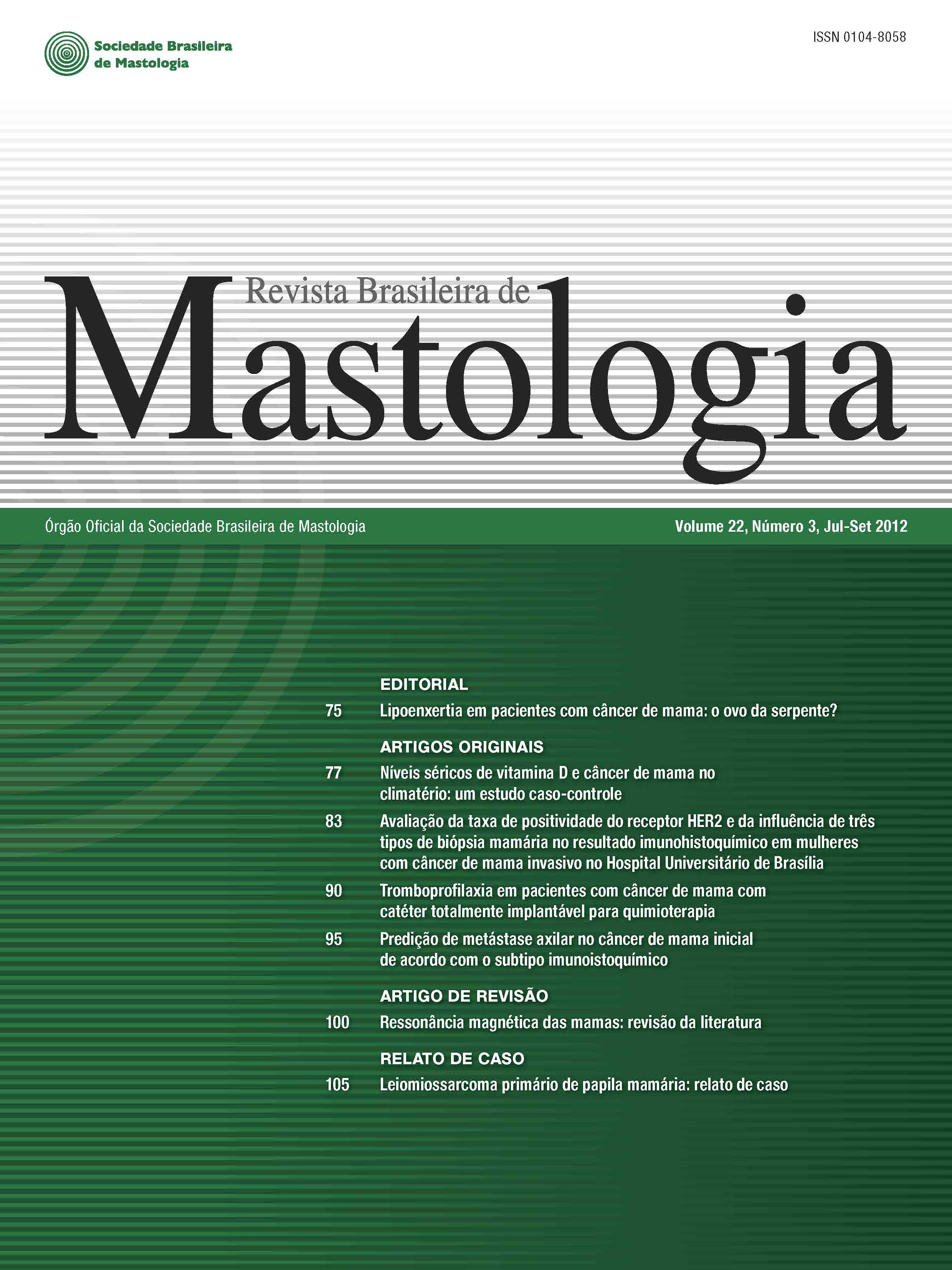Thromboprophylaxis in patients with breast cancer who underwent placement of totally implantable catheter for chemotherapy
Keywords:
Deep vein thrombosis, Implantable catheters, Chemotherapy, Breast cancerAbstract
Objectives: To determine the incidence of symptomatic deep vein thrombosis in patients with breast cancer who underwent placement of totally implantable catheter for chemotherapy and received thromboprophylaxis with flaxiparina. Methods: From March 2007 to September 2009, 69 patients with breast cancer with indication for intravenous chemotherapy for six months or longer, who underwent placement of totally implantable catheter, were analyzed prospectively to evaluate occurrence of symptomatic deep vein thrombosis. Results: We included 69 patients with a mean age of 53.9 years, ranging from 29 to 78 years. The average time for placing the catheter was 22 minutes. The venous access by open was performed in 92.5% and by puncture in 7.5% of the cases. The veins used in the open technique were: right cephalic (53.7%), left cephalic (35.8%), right external jugular (1.5%) and left external jugular (1.5%). By puncture, the veins used were: right subclavian (3%), left subclavian (3%) and left internal jugular (1.5%). There were only two complications. One patient, after 48 hours of catheter implantation, presented bleeding, reason why flaxiparina was suspended. Another patient during attempted puncture of the left subclavian vein suffered rupture of the vein with transfixation of the dilator and developed hemomediastin and hemothorax, requiring chest drainage. Conclusion: In this study there were no cases of deep vein thrombosis in symptomatic patients with breast cancer who underwent catheter placement and received thromboprophylaxis with flaxiparina.










